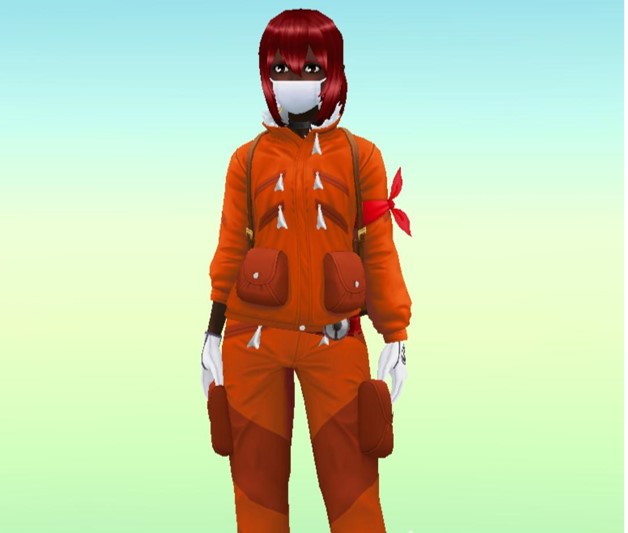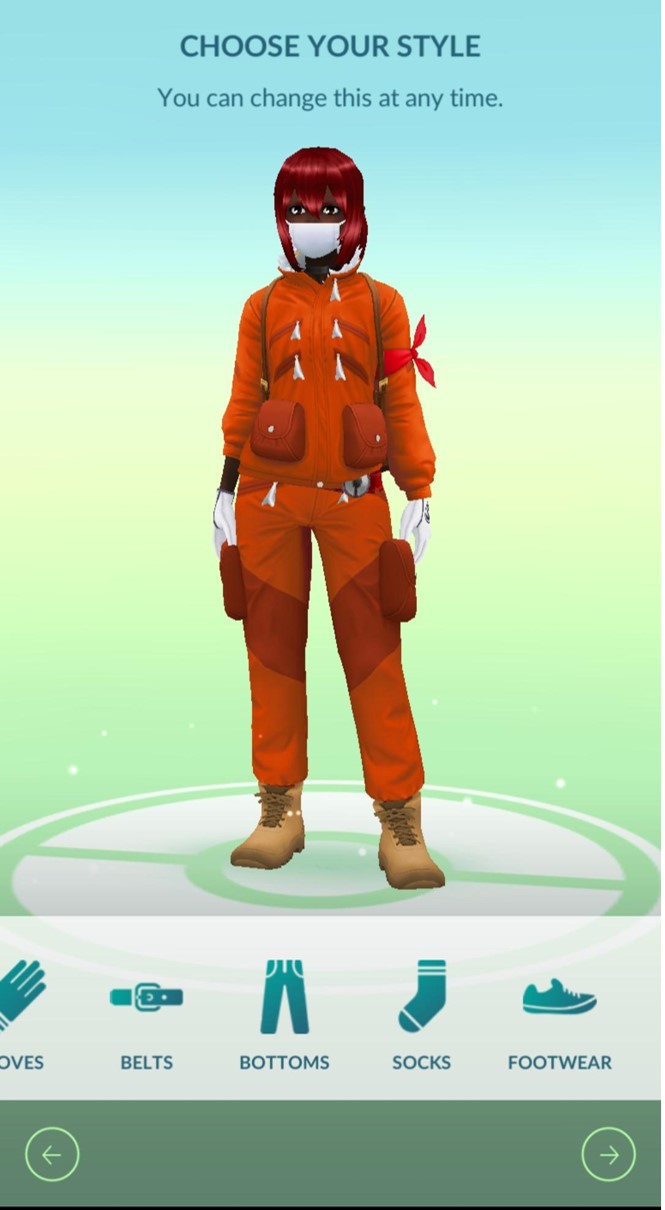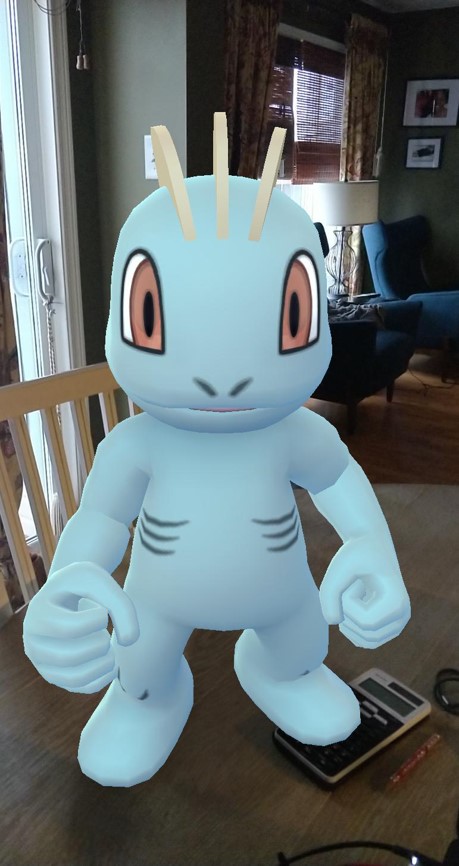Digital to Physical Game: Pokémon Go

Prompt
One our very first assignments for the Digital Games course was to analyze a digital game and create a physical version of it for the rest of our class to play. My teammates and I chose Pokémon Go as our digital game and recreated it as a scavenger hunt. This blog post will document our process and some of our reflections on this experience.

MDA Analysis
One of the required readings in this course is “MDA: A Formal Approach to Game Design and Game Research” by Robin Hunicke, Marc LeBlanc, and Robert Zubek. In this paper, the authors present the MDA framework (which stands for Mechanics, Dynamics, and Aesthetics). This formal approach to analyzing and understanding games bridges the gap between technical game research, game design, and game development. The framework was key to the first part of our analysis.
Despite its initial hype, most of my teammates and I were trying Pokémon Go for the first time. As such, it was interesting to conduct the MDA analysis as a new player. In my opinion, looking at the game with fresh eyes made this exercise easier.
Mechanics
- Pokéballs that can be thrown
- Pokémons
- Virtual map
- Pokéstops
- Battle gyms
- Lures, raspberries, incense, etc. to attract Pokémons
- Stardust and candies (earned every time you catch a Pokémon)
- Potions to bring Pokémons back to health
- Currency to spend on loot at the Shop and to evolve your Pokémon
- AR Camera
- Pokédex journal
- Characters: Professor Willow, Team Rocket, etc.
Aesthetics & Dynamics
Challenge: game as obstacle course
- Catching Pokémon by throwing Pokéballs a certain way, into the target
- Having a limited amount of Pokéballs
- Hitting up Pokéstops for loot
- Exchanging loot for upgrades
- Battling for control of gyms that are conquered by rival factions

Fantasy: Game as make-believe
- There’s a whole lore surrounding Pokémon, that they live among us, that the character that guides you has been studying them for many years
- Transforms your map into a fantasy world where Pokémon exist, using GPS tracking
- Transform your camera into a AR viewer where you can view Pokémon in your real environment
Discovery: games as uncharted territory
- Exploring the map, finding Pokémons, Pokéstops, battle grounds, etc.
Expression: Game as self-discovery
- Encourage users to leave their mark by customizing your character and choosing a unique nickname
- Factions can claim and/or defend gyms
- Changing levels as you collect Pokémons and points
- Fellowship: game as social framework
- Able to add friends, know when they’re online, and play with them
- Able to use lures to attract Pokémons that others around you can also capture
- Able to add Pokémons to help defend gyms that are owned by a player’s faction, and can team up with other members of their factions to take control of gyms
Aesthetic Models
Pokémon Go incorporates Challenge, Fantasy, Discover, Expression, and Fellowship aesthetics. The game succeeds when players are invested in actively participating in the game every day by walking around, collecting Pokémons and battling other players. This requires that enough Pokémon show up on their map, that those Pokémons vary in their novelty and difficulty to catch, that Pokéstops include worthwhile bonuses, and that players work as both adversaries and collaborators.
Novelty, varying levels of difficulty, competition, and collaboration are essential to this game. If players don’t see new types of Pokémon every day and/or in different locations, daily rewards and promotions, time-based challenges, gyms, or upgrades/evolutions, the game becomes less interesting.
The game also makes the first few levels really easy for beginners. You earn lots of goodies and extra rewards at first to encourage you to keep going.
Physical Game
Evidently, we felt that Pokémon Go could work as a scavenger hunt using common household items. Since we are still in the middle of a pandemic, our “physical” game would still have some digital elements (ie. being guided through Microsoft Teams).
To present our concept to our classmate, one of my teammates put together this video:
Reflections from the Team
The exercise to study any game of our opinion gave us a better understanding of game-making from a User Experience perspective.
The team was able to break down the game into parts, such as the levels of game building and the interactivity. These elements generally go unnoticed while discussing in groups, where the focus is mainly game play.
This process of researching helped us learn about the background of Pokémon Go, its creators, and the varying opinions from its users and non-users on this new approach to interactivity.
Most of us were trying out the game for the first time, and the augmented Pokémons projected onto our real world evoked a sense of nostalgia and companionship.
We agreed to divide the tasks amongst ourselves, and that helped us build our own guilds and complete the assignment in a more efficient manner.
Our research proved beneficial enough for us to iterate upon different ideas for testing. We settled upon a name during this process.
We agree that Augmented Reality among the many other approaches in the gaming sector is very accessible and convincing to its users, but it’s still in its beta version compared to PC or console gaming.
Either way, we are interested in researching this game further out of our own curiosity--we hope to figure out how to get rid of our newfound addiction to this game.
Reflections about the game test experiment
The process of transforming the virtual game into a physical game was a new and very different experience for us all. It encouraged us to expand our thinking, research, and future practice.
The experimental testing worked out quite successfully for us, and that’s mainly because our classmates showed enough enthusiasm in trying out our prototype.
This game of hunting objects was easy to adapt in our current online circumstance, and could have worked as an in person adaptation as well
We hoped to successfully instigate in each the participant a sense of presence about their environment. Our four-minute gameplay forced our participants, who are usually glued to their seats, to get up and pay attention to their own environments.
To add a healthy amount of rivalry and motivate our classmates to player, we created a simple points system on spreadsheet. Although we believe points are a good reward mechanism, we had trouble keeping track of the score while the game was going on because of the limited amount of people that can be seen at once on Microsoft Teams. This made it difficult for us to collect the data about which player brought which object, and how many points each player gets. Additionally, there was limited coordination between the game master and scorekeepers on when to move on to the next object. This led to us calculating the points incorrectly.
For future iterations, we could consider adapting the score-keeping strategies of other teams (namely, the Animal Crossing team).
Comments